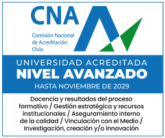Mammaplasty is a widely performed surgical procedure worldwide, utilized for breast reconstruction, in the context of breast cancer treatment, and aesthetic purposes. To enhance post-operative outcomes and reduce risks (hematoma with required evacuation, capsular contracture, implant-associated infection and others), the controlled release of medicaments can be achieved using drug delivery systems based on cyclodextrins (CDs). In this study, our objective was to functionalize commercially available silicone breast implants with smooth and textured surfaces through in-situ polymerization of two CDs: β-CD/citric acid and 2-hydroxypropyl-β-CD/citric acid. This functionalization serves as a local drug delivery system for the controlled release of therapeutic molecules that potentially can be a preventive treatment for post-operative complications in mammaplasty interventions. Initially, we evaluated the pre-treatment of sample surfaces with O2 plasma, followed by chitosan grafting. Subsequently, in-situ polymerization using both types of CDs was performed on implants. The results demonstrated that the proposed pre-treatment significantly increased the polymerization yield. The functionalized samples were characterized using microscopic and physicochemical techniques. To evaluate the efficacy of the proposed system for controlled drug delivery in augmentation mammaplasty, three different molecules were utilized: pirfenidone (PFD) for capsular contracture prevention, Rose Bengal (RB) as anticancer agent, and KR-12 peptide (KR-12) to prevent bacterial infection. The release kinetics of PFD, RB, and KR-12 were analyzed using the Korsmeyer-Peppas and monolithic solution mathematical models to identify the respective delivery mechanisms. The antibacterial effect of KR-12 was assessed against Staphylococcus epidermidis and Pseudomonas aeruginosa, revealing that the antibacterial rate of functionalized samples loaded with KR-12 was dependent on the diffusion coefficients. Finally, due to the immunomodulatory properties of KR-12 peptide on epithelial cells, this type of cells was employed to investigate the cytotoxicity of the functionalized samples. These assays confirmed the superior properties of functionalized samples compared to unprotected implants.



